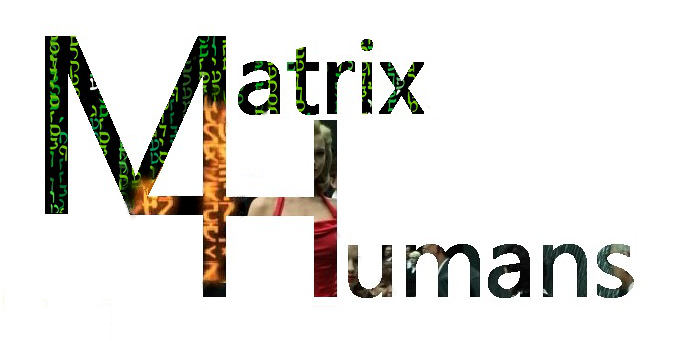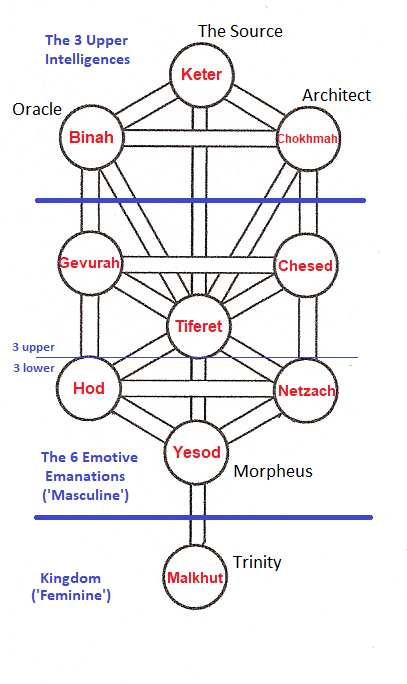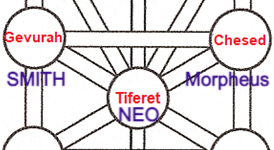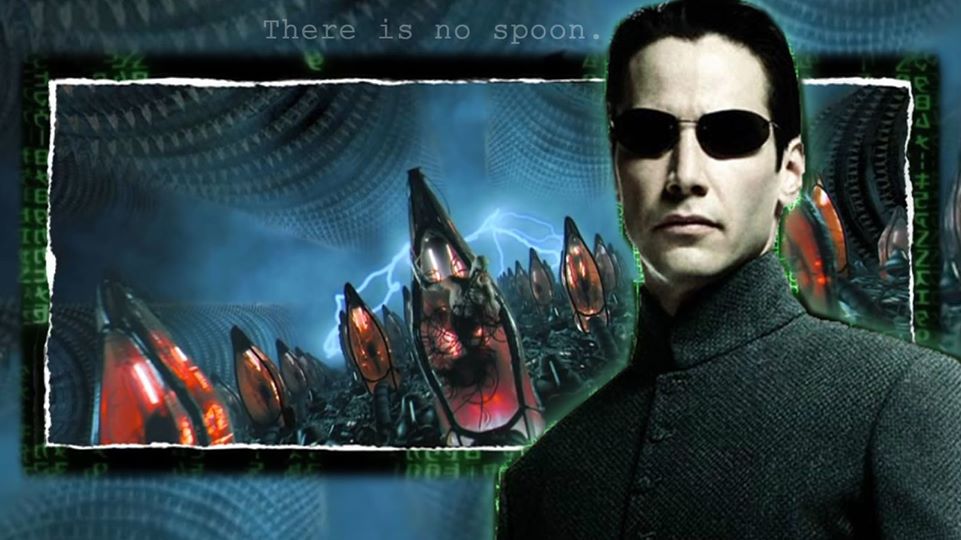Sefirot: Building Blocks of the Matrix Worlds
We’re starting with a basic overview of the ten sefirot. As stated, these emanations are all present within the different worlds of existence. How they function within each of those worlds differs.
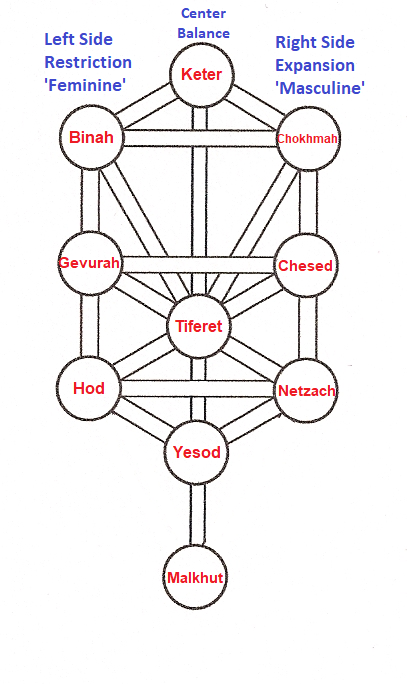
The sefirot are usually laid out in a diagram like the one here. This is called the Tree of Life in kabbalah. It shows us things about how the emanations function and interrelate.
We will be utilizing this diagram to explain a number of concepts and attributes of the characters going forward.
First Concept: Left-Center-Right Columns
The Tree of Life diagram places the ten sefirot on three columns.
The right side represents functions such as ‘expansion,’ being ‘proactive’, and using imagination.
The left is the opposite side, one of ‘restriction,’ being ‘reactive’ and critical analysis.
Characters in the movies, at varying times, exhibit behaviors that may be more related to the right or to the left.
The left and right sides in this context, carry with them the ideas of ‘feminine’ (left) and ‘masculine’ (right), but not in the sense of gender.
(Note: There is a different masculine-feminine dynamic when discussing these in their ‘vertical’ array as shown below.)
The middle column is that of ‘balance’ between the two sides. This is important as the attributes on the right or the left, if “left to themselves,” can be counterproductive and even destructive. (i.e., the ‘unplugged’ Smith, which we discuss later.)
This resolving of opposites is central to understanding and advancing upon our own path in this world. It is reflected in The Matrix Resurrections in terms of a “binary” view of reality in need of rectification.
We will next explain a bit about these emanations in a ‘descending’ (vertical) order and place them in several groupings. The terms are given in their original language. Note that direct translations don’t always carry over well into English.
Second Concept: The ‘Top 3’ are the ‘Brains’
The first (‘top’) three sefirot are seen as being ‘outside’ of our day-to-day matters. They are collectively called the divine ‘intellects’ or ‘brains’ (Mochin). You can also think of them as “overarching principles” above the lower seven emanations.
In the Matrix, these correspond to the three key entities ‘outside’ of the Matrix world: the Source, the Architect and the Oracle. These are not human entities and are very singular in terms of what they represent.
- Keter (keh-ter): This literally means ‘crown,’ and as such is something that is separate from the body though attached to it. Keter is seen as ‘outside’ the bounds of existence/creation. It is an ‘intermediary’ stage between the transcendent/unknowable Creator and the rest of the Sefirot and the four Worlds of Existence. In the Matrix, the Source relates to both the world of pre-existence (discussed earlier) and Keter, as it is ‘nothing’ (“out of sight”) with regard to the existence of the programs and Matrix worlds. None of the characters in the movies have any true understanding of the Source, even though it is the original, hidden ‘source’ of their own existence. As such, Keter is not something we deal with from our perspective. The manifestation of Keter within existence is called Da’at (dah-aht) and is something we will discuss later.
- Chokhmah (hoke-mah): The direct translation is ‘wisdom.’ However ‘wisdom’ in kabbalistic language is not associated with being ‘enlightened.’ Chokhmah is first the idea of “something coming out of the nothingness” of Keter/the Source. This ‘something’ is a composite unity within a ‘singular point’ of existence. That point with everything within it is Chokhmah. This relates to the Architect. Everything in the Matrix existed “as one” within him, before he ‘created’ it. You can compare this to physical science, where you have the “point before the explosion” of the “Big Bang.”
- Binah (bee-nah): This means ‘understanding’ and is the companion of Chokhmah. The Oracle acts as Binah, which is likened to the idea of ‘mother’ in kabbalah, while Chokhmah is considered ‘father.’ (Just as the Architect and Oracle are father and mother of the Matrix.) Binah is where the unified thought of Chokhmah is developed. (Binah would relate to the actual explosion of the “Big Bang” in the above example.) Thus the Architect calls the Oracle, “an intuitive program,” as she can relate to the expansion of his ideas in ways he himself cannot. They function in unison, and each exists to, “do what they are here to do” (as the Oracle said).
Third Concept: “The Six”
To recap, the above three sefirot are not directly involved in our day-to-day reality, or that of the Matrix characters. The exception to this is that humans freed from the Matrix connect (one or more times) with the Oracle. She is the ‘nearest’ to them of the three upper emanations.
Thus, the Oracle (as Binah) is seen as the “entry point” to the three highest sefirot when viewing from the “bottom-up.” Binah is also called the ‘mother’ to the lower emanations.
Now it gets interesting. The next six emanations, though having their own distinct characteristics, also function as a ‘unit.’ You can think of these as six areas we need to repair in order to improve and move forward.
They are called “emotive” attributes, but this is not ’emotion’ as typically thought of.
In the Matrix, especially with Neo, the repair of these six, is especially associated with the means of returning to the Source. (Working up the path of the One.) This is the aspect of knowing (connecting to) one’s “true self,” as we discuss in our article on the Temet Nosce sign in the Oracle’s apartment.
The fact that there are six in this grouping also connects to Neo being the sixth and final version of “the One,” which we discuss in a later post.
This group of six is further broken down into two sets, which function together, connecting above and below:
- the upper three that relate “back toward” Binah (the mother, the Oracle in the Matrix), i.e., how we think about doing something based on the principles of the ‘intellectual’ emanations above.
- the lower three that are “geared downward” toward Malkhut (the ‘bride,’ i.e., Trinity in the Matrix), bringing thought into the world of physical reality and action.
Let’s look at each subset with some Matrix examples:
Upper 3 – Connecting to the Higher Intellect
Looking back at the Tree of Life diagram, you can see that each of these sets of three has aspects of a proactive side, reactive side and a center of balance, as mentioned earlier.
- Chesed (heh-sed): The word means ‘kindness’ which has “no bounds” (i.e., no ‘reason’ for it) reflecting the expansive properties of the right side. This trait is prominent in Councilor Hamaan and is reflected in the open-ended questions he asks Neo. This is also a strong attribute within Morpheus, especially regarding his focus on ‘belief,’ which is associated with the limitless right-side.
- Gevurah (gev-oo-rah): This means ‘judgment’ and is the opposite of Chesed. It relates to ‘restriction.’ Although it and all the emanations are ‘neutral,’ because Gevurah has the capacity to restrict even what is good, it is considered the root of evil and destruction – hence Smith.
- Tiferet (ti-feh-ret): This is ‘beauty’ in the sense of balance or harmony, especially regarding Neo, who is in a sense the balance between Morpheus and Smith to the right and left. Both helped form who he became.
Neo is a harmony of Smith and Morpheus
Lower 3 – Connecting to the World of Action
The next three sefirot mirror the set above on a one-to-one basis but relate to the ‘application’ of their functions. The direct translations of these words don’t carry over well, so we’re adding more descriptive terms.
- Netzach (net-zahk): Like Chesed above it on the right side, Netzach is pro-active. It is the trait of confidently jumping in and speaking or taking action. For example, Netzach is exhibited in Rama Kandra in how he easily approached Neo in the train station. A character who exudes this attribute, to the point of having “boundary issues,” would be ‘Kid’ in Matrix Revolutions.
- Hod (hode): This is reactive, like Gevurah above it. Hod is taking in information, examining all the facts, then considering what the best action would be to embark upon. If Netzach is the saying, “he who hesitates is lost,” then Hod is, “look before you leap!” Someone defective in this area creates a corrupt view of reality. Two examples are Commander Lock and Cypher. On a positive note, Kamala, the wife of Rama Kandra, can also be seen as Hod, with her ‘interactive’ nature and direct questioning of Neo (for the good).
- Yesod (yeh-sode): This is the aspect of bringing things together (synergy) and making connections. This can be connecting people, ideas, events, even generations through time. Yesod is another strong attribute of Morpheus, especially in his role as Neo’s ‘teacher’ as he shows him (and others) “the door” (to connect to the higher realms). This relates to the placement of Yesod in the “Tree of Life” (see above diagram), between Malkhut (the Matrix world) below, and ‘all’ the rest of the emanations above. Another character who displays a strong sense of synergy and connection between above and below is Niobe. Conversely, a defective attribute of Yesod is seen in the Merovingian (the “trafficker of information” between worlds) with his personal doctrine of ‘causality’ which we examine in his character profile.
Everything That Has a Beginning Has an End
When considering the seven lower emanations and the dynamics involved, the group of six above are seen as ‘masculine’ and more specifically, the concepts of ‘son’ or ‘bridegroom,’ depending on the context.
Malkhut, ‘below,’ is feminine and the ‘bride’ (or in some contexts, the ‘daughter.’)
- Malkhut (mahl-koot): This means ‘kingdom,’ and thus has a unique relationship to Keter, the crown. The crown is the ‘first’ emanation, and kingdom is the ‘last’ — i.e., “the beginning and the end.” As everything is ‘above’ Malkhut, this means everything ‘flows’ into it – be it good or bad. This has a direct correlation to the people stuck in the Matrix and their eventual redemption. At times, Malkhut is called the “lower female” compared to the “upper one,” which is Binah/the Oracle. This lower feminine emanation has both a ‘bride’ and a ‘daughter’ aspect to it. Trinity played the first role with Neo. The aspect of the daughter is one that was not fully revealed in the Matrix trilogy. There was a daughter figure introduced however, in the character of Sati. We expect she will be in that role – albeit an older version of her. Both the bride and daughter concepts reflect the ideas of that ‘divine presence’ (Shekinah) in the world of concealment — something from ‘beyond’ our world that manifests within it (as Trinity did for Neo.).
One Other Angle
There’s another important relationship between the templates of the Worlds of Existence and the template of the sefirot. Although each World has the complete set of 10 sefirot within it, there is another correlation between certain emanations and worlds:
- Keter/Crown relates closely to the World of ‘pre-existence’ and ‘detachment’ from the rest
- Chokmah/Wisdom, being close to Keter, is linked to the World of Atzilut (‘nearness’)
- Binah/Understanding relates closely to the World of Beriah (‘creation,’ in terms of its ‘highest’ level and ‘mother’ to the rest)
- The unit of the “next six” are associated with the ‘connecting’ World of Yetzirah (‘formation’)
- The last, Malkhut/Kingdom, is connected to physical reality, the world of Asiyah (‘making’).
Thus, as a final recap, we have:
- The Source, related to both Keter and pre-existence
- The Architect/Father, related to both Chokmah and the world of Atzilut (nearness to the Source)
- The Oracle/Mother, related to both Binah and the world of Beriah (the head of creation)
- Morpheus (and others), related to both “the six” and connecting world of Yetzirah (and program world)
- Trinity (and others), related to both Malkhut and world of Asiyah (and the Matrix)
There’s No Going Back!
This completes our “crash course” on The Matrix and Kabbalah. (Sorry, no diploma – yet.) All of the topics mentioned thus far will be further explained as we venture into our Character Profiles. What’s important to know is that the template of the sefirot is primarily a system of self-improvement. This is true for us as well as the characters in the Matrix.
- Following the Character Profiles is a section on some of the more well-known Matrix concepts and their explanation in kabbalah.
- After this is a section of even deeper themes found through the trilogy.
- We then present articles on The Matrix Resurrections, discussing where we will likely be heading in the story.
- Next, we expand these ideas into “real-life” by showing how they are present in certain well-known aspects of modern culture in “The M-Files” phase of Matrix4Humans.
It’s best to continue with these posts in the order presented, as we try to add “precept upon precept.” Simply follow the arrow buttons on the sides of the screen if they appear in your browser.
If you click “Back to the Knowledge Base” on the bottom of a screen, it will take you to the Site Map page for the Knowledge Base. You can always click “Knowledge Base” at the top of any screen for a nicer-looking view of the list of articles!
There’s a lot here, and we’re continually adding to it. You will never look at the Matrix movies the same after this. Read some of our Testimonials to see what others have said. Send one to us if you like!
You still have time before we get to The Matrix Resurrections on 12.22.21.
